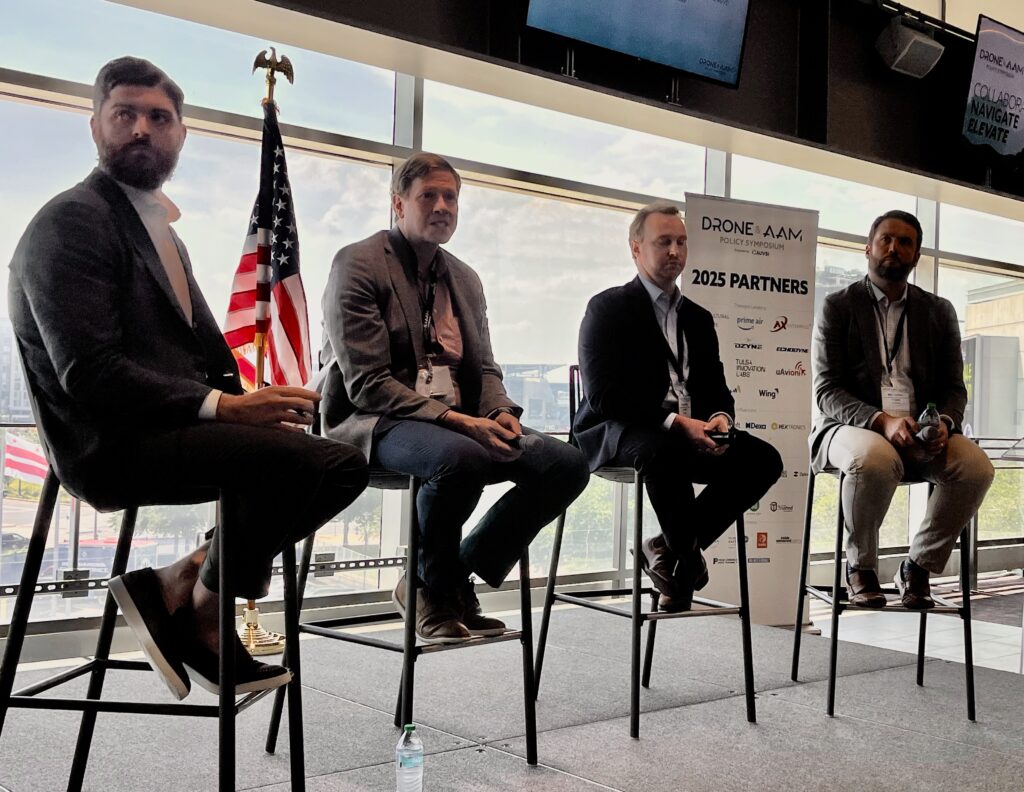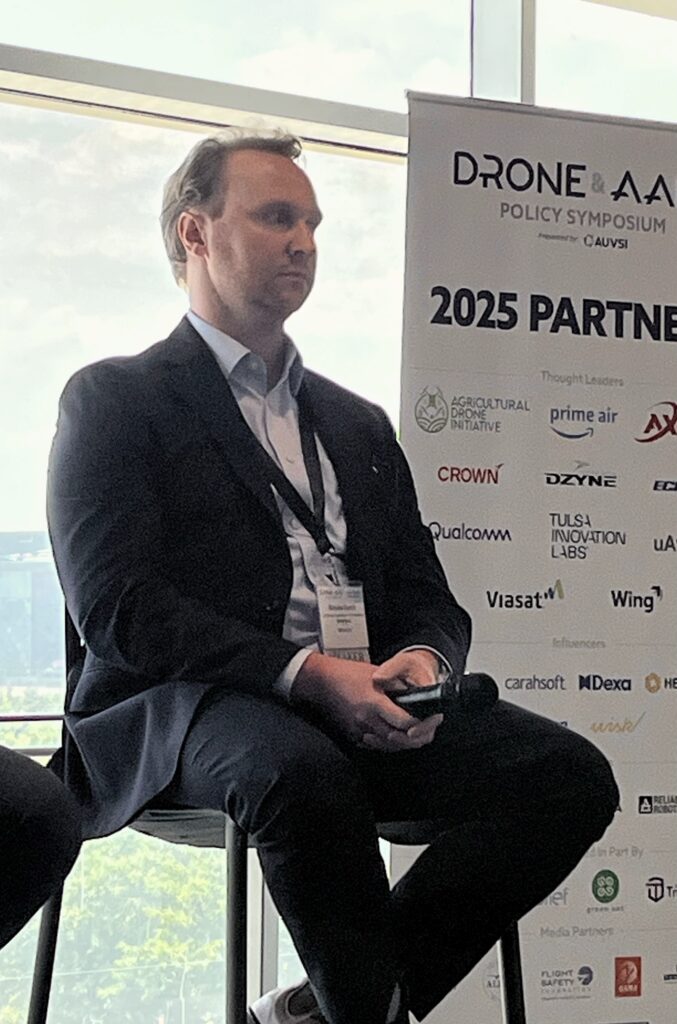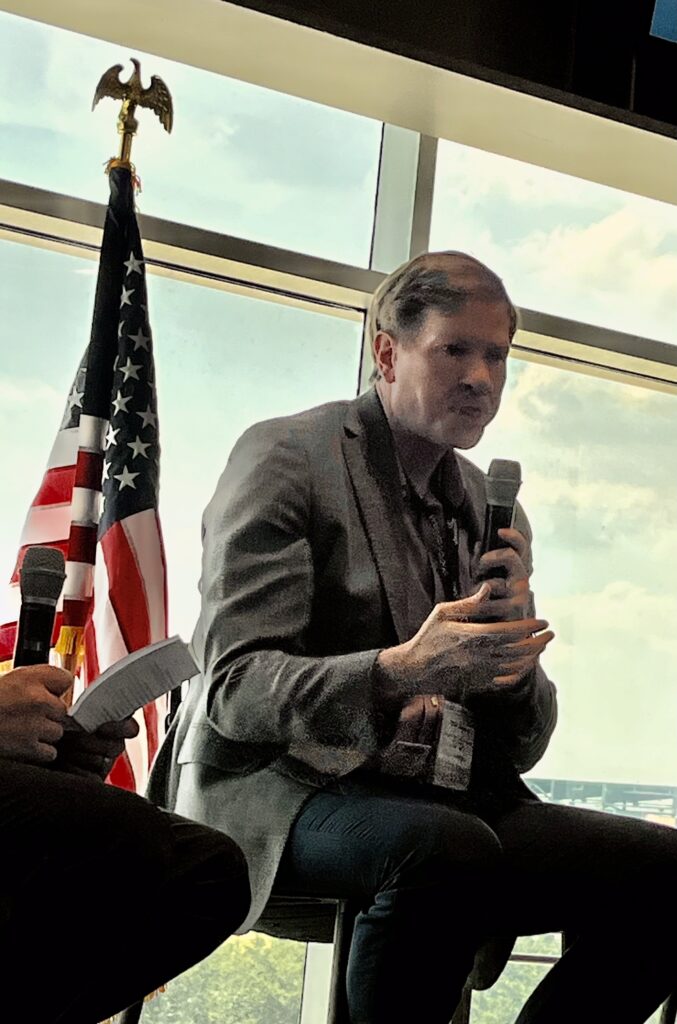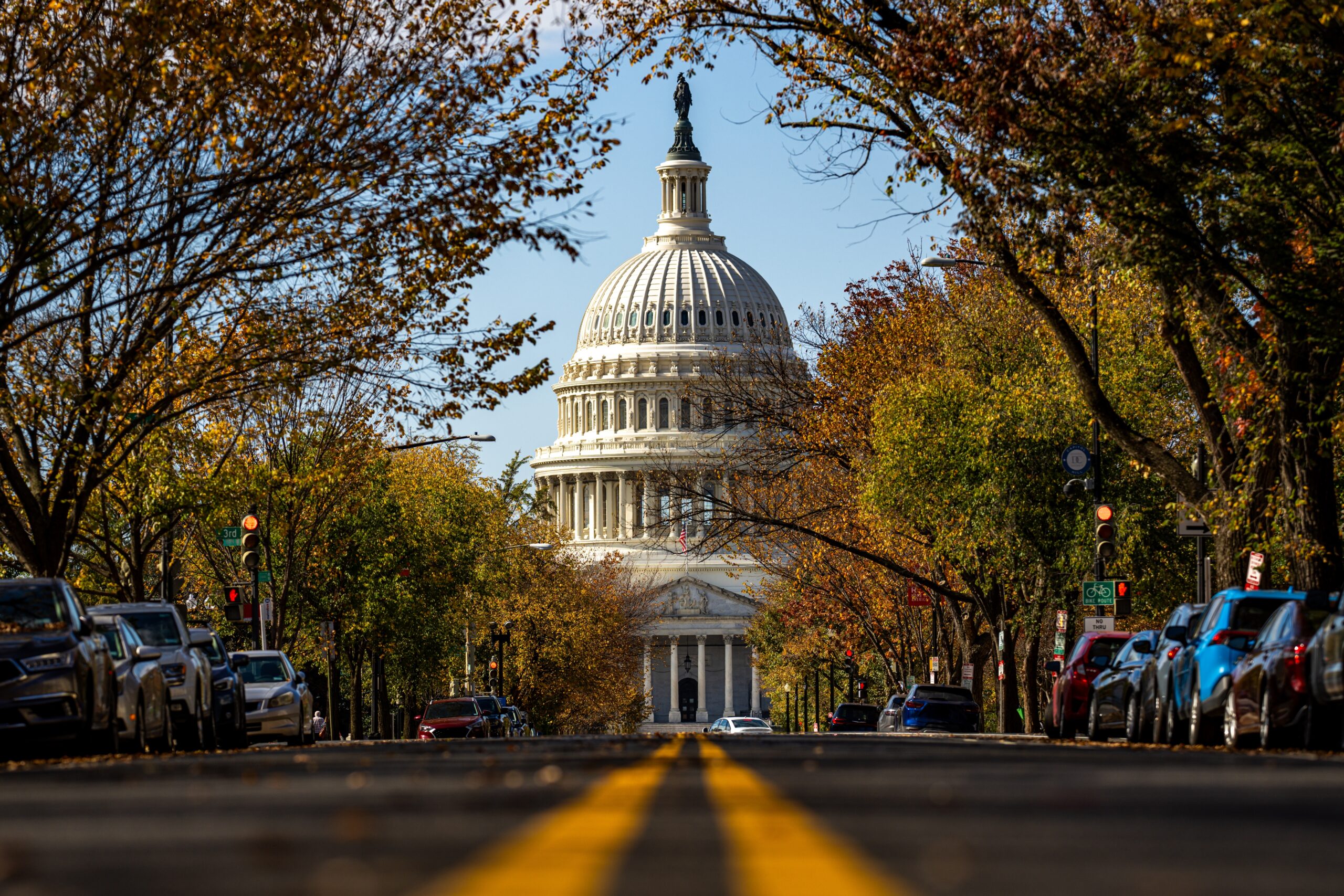By: Dawn Zoldi
As the uncrewed aircraft systems (UAS) and advanced air mobility (AAM) industries surge forward with innovation, policymaking on Capitol Hill hustles to keep pace. At the AUVSI Drone and AAM Policy Symposium, the intersection of technology and law came sharply into focus during a panel moderated by Max Rosen, Associate Vice President of Government Affairs at AUVSI, and joined by key congressional staff: Nicolas March (U.S. Senate Judiciary Committee), Mike Dankler (Deputy Chief of Staff, Rep. Rudy Yakym, IN-02) and Brent Blevins (U.S. House Committee on Science, Space, and Technology). Their message for industry? Engage, educate and empower legislators to write future-proof policies—because Congress can’t do it alone.
Understanding the Influencers: Key Committees and Their Impact
The House Science, Space, and Technology Committee, represented by Brent Blevins, oversees federal research that’s not tied to human health, including NASA, aeronautics and FAA research programs. The committee focuses on federal research and development (R&D) and fostering collaboration among agencies like the Federal Aviation Administration (FAA), Department of Homeland Security (DHS) and NASA to ensure American R&D remains at the forefront and lessen regulatory burdens over the long haul.

Nicolas March serves as counsel of The Senate Judiciary Committee, tasked with privacy and security issues pertaining to drones, including concerns about surveillance, data security and counter-UAS (C-UAS) operations. This committee remains central to extending authorities for the Department of Justice (DOJ) and DHS to execute C-UAS and is bullish on maintaining robust oversight.
The House Ways and Means Committee, which Mike Dankler supports, is a powerhouse in trade, tariffs and supply chain issues. All of these issues remain crucial as the industry grapples with escalating trade wars, critical minerals and shoring up domestic production of components and complete systems.
Three Hot Topics: Counter-UAS, Supply Chain, and Spectrum
C-UAS: More Than a Regulatory Checkbox
Drones have tremendous potential, but their misuse, from smuggling contraband into prisons and flying over sensitive sites to many other nefarious purposes, raises complex policy questions about security and personal liberty.
March explained, “There’s a real public safety mission here…drones aren’t just going away. This technology is here to stay.” He noted bipartisan consensus around extending core federal authorities for DOJ, DHS, Secret Service and Customs and Border Patrol (CBP), but flagged that “expansions to state, local, tribal, and territorial (SLTT) entities, and other federal agencies, is a thorny issue.” This, he told the audience, will require education across all levels of government and relentless advocacy from industry. (See prior AG coverage of C-UAS expansion to SLTT).

Supply Chain Vulnerabilities: From Tariffs to Onshoring
For his part, Dankler highlighted the strategic importance of industry supply chains. “We’re using pretty close communication with the Commerce Department, U.S. Trade Representative and others about impacts…we’re looking more broadly, especially when it comes to Section 232 investigations—a wonky, weird section of the code that has massive implications,” he said.
For the uninitiated, “Section 232” refers to a provision of the U.S. Trade Expansion Act of 1962 that authorizes the President, acting via the Department of Commerce, to investigate whether the importation of certain products (in this case, unmanned aircraft systems, or drones, and their components) threaten to impair national security. If such a threat is found, the President has broad authority to restrict imports, usually through tariffs or other trade measures.
In July 2025, the Department of Commerce initiated a Section 232 investigation specifically targeting imported drones and their parts, citing concerns about overreliance on foreign (especially Chinese) technology for national security-sensitive sectors. This investigation could result in tariffs, import restrictions, or bans on drones from specific countries, especially those considered foreign adversaries. These actions are not limited to military drones but could also include consumer and commercial models, and they are designed to both protect domestic industries and reduce national security risks.
Dankler urged industry to consider these grand-scale issues, including critical minerals and broad tariffs—what he referred to as “the carrot and the stick”—not as distant government squabbles, but as factors with real, immediate impacts on businesses.
Spectrum Policy: Enabling Advanced Operations
There’s intense movement at the FCC toward opening new bands (including 450MHz for command & control and 24–25GHz for detection) for drone operations as well as to modernize rules to support robust, safe and reliable connectivity for BVLOS and other advanced missions. Panelists encouraged industry to track these developments, provide comment and report interference and operational needs. They said that effective spectrum policy enables all other technological advances for the industry. (See prior AG coverage discussing the FCC’s new spectrum rules).
The Main Event: The FAA Reauthorization Act and Proactive Engagement
All panelists hailed the most recent FAA Reauthorization Act as a springboard to the next generation of drone policy. Among its central tenets, it:
- Accelerates rule making for Beyond Visual Line of Sight (BVLOS) operations.
- Expands test sites for pilot programs, including drone delivery.
- Promotes domestic R&D, with grant programs for infrastructure inspection and scaling U.S.-made systems.
- Directs coordination across agencies to avoid duplicative or confusing standards.
- Provides tools for first responders and public safety, seeking to balance security needs with commercial growth.
Industry now has the clearest opportunity yet to help define what comes next, according to Blevins. “Our goal is to create enough information in this process so that the regulatory burden is minimal for all of you…we want to make sure people feel safe and comfortable, and that R&D is happening here, not overseas,” he said.
Dankler noted that while the ink is “not yet dry” on the past FAA Reauthorization Act, industry needs to start thinking about and advocating for the next one. Four years will go fast, he said.
The panelists repeatedly returned to the importance of industry engagement. Here’s what they want count on industry to do:
Share Technical and Policy Expertise
Most members aren’t technical experts. Clear, jargon-free briefings, demos and visualizations “help enormously.” “Help us understand national security implications…You’re the ones on the ground, doing the work every day,” Blevins implored. “Share that information with us—what can be done, what’s the impact if we ban something, what’s the cost to industry and to the broader economy?”

Provide Local Impact Stories
Legislators are especially swayed by constituent stories, whether it’s job creation from a new U.S. facility, or challenges from a lack of domestic equipment. “The education campaign is critical. Define the problem and make it real,” March said. “Bring the issue home. Let a member know when there’s a prison in your district struggling with drones, or how supply chain disruptions hit local jobs.”
Educate on What’s Possible, Safe and Needed
Panelists acknowledged industry is “begging to be regulated” with clear, workable rules. Suggest what reasonable, actionable oversight looks like, especially for BVLOS, C-UAS and supply chain.
Highlight Regulatory Hurdles
When a project gets blocked due to environmental assessments or inconsistent requirements, document the cost in jobs, safety, and economic activity, and share it. “Continue to apply the pressure and continue to lobby us,” March advised.
Collaborate in Coalitions
A chorus of united voices, such as a collective of manufacturers, users and allied sectors, gets more traction than single-entity advocacy.
Bring Solutions, Not Just Problems
Propose specific language for bills, pilot program ideas and pathways for compliance, not just complaints
Saved Rounds: Top 8 Tips & Lessons for Industry
Congress is looking for partners, not just petitioners. By taking a proactive, informed and collaborative approach, drone and AAM industry professionals can help shape the rules of the road to ensure American leadership, competitiveness and safety in our airspace. Here were the top 8 ways to do that:
- Build Relationships Year-Round: Don’t wait for crises. Schedule regular meetings, invite congressional staff to site visits and keep communications flowing.
- Educate on Key Technologies: Use demos and plain-language summaries to explain how spectrum, AI and BVLOS unlock new potential, and what happens if policy falters.
- Tell Compelling Local Stories: As mentioned more than once, frame every policy discussion in terms of district and state impacts with an emphasis on jobs, safety and economic growth.
- Describe the Risks of Policy Gaps: Be specific about how delays or uncertainty in rules for BVLOS, spectrum or C-UAS constrain progress or cede ground to global competitors.
- Celebrate Bipartisanship, But Know the Divides: While most drone issues are bipartisan, nuances around tariffs, supply chain and federal carveouts sometimes pit interests against each other. Navigate these carefully.
- Monitor and Shape Emerging Rules: Comment on FCC spectrum NPRMs, participate in FAA planning and pilot programs and offer up real-world data on operations and needs.
- Show Willingness to Comply and Innovate: Communicate the industry’s readiness for clear rules and propose frameworks that foster both safety and technological leadership.
- Highlight Urgency and Opportunity: Stress that U.S. leadership is at risk if smart policy doesn’t keep up with rapid technology. Policymakers want to support innovation when they see the concrete stakes.
The future of drone policy might remain largely unwritten. For Congress, the industry’s pen is mighty, Wield it well and often.

